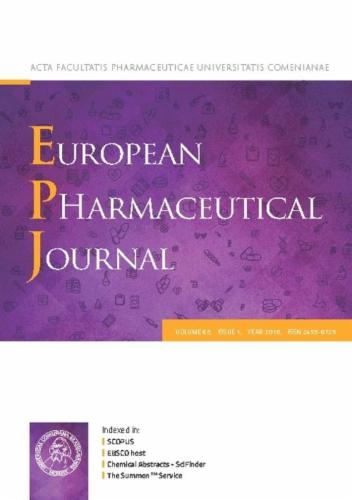A physiologically based biopharmaceutics modeling (PBBM) framework for characterizing formulation-dependent food effects: Paving the road towards fed state virtual BE studies for itraconazole amorphous solid dispersions
IF 4.3
3区 医学
Q1 PHARMACOLOGY & PHARMACY
引用次数: 0
Abstract
This study leverages physiologically based biopharmaceutics modeling (PBBM) to predict the clinical performance of two itraconazole (ITRA) amorphous solid dispersions (ASDs), Sempera® and Tolsura®, under fasted and fed state conditions, exploring the potential of PBBM in predicting formulation-specific food interactions. The ITRA formulations were subjected to extensive in vitro biopharmaceutical testing, including solubility studies and dissolution tests under fasted and fed state conditions, revealing significant differences in dissolution behaviors between Sempera® and Tolsura®. The impact of food and hypochlorhydria on drug absorption was evaluated using a stepwise mechanistic deconvolution-reconvolution PBBM approach, integrating fundamental parameters based on the in vitro data into the final model. Our model not only successfully predicted the effects of acid reducing agents (ARA) and food on the oral absorption of ITRA, but also captured the between-subject variability, demonstrating the utility of this approach in understanding the complex interplay between drug, formulation, and gastrointestinal environment. Most importantly, the PBBM was able to accurately predict the positive impact of food on the absorption of Sempera® and the negative food effect of Tolsura®. The findings highlight the importance of considering formulation characteristics and gastrointestinal physiology, underscoring the potential of PBBM in bioequivalence (BE) assessment of generic formulations under varying physiological conditions, including in the fed state and in hypochlorhydric patients. The successful application of this stepwise and mechanistic PBBM approach suggests a potential pathway for streamlining drug development and may contribute to more informed decision-making for BE assessment.

基于生理的生物制药建模(PBBM)框架,用于表征配方依赖的食物效应:为伊曲康唑非晶固体分散体的喂养虚拟BE研究铺平道路。
本研究利用基于生理的生物制药模型(PBBM)来预测两种伊曲康唑(ITRA)非晶固体分散体(asd) Sempera®和Tolsura®在禁食和进食状态下的临床表现,探索PBBM在预测配方特异性食物相互作用方面的潜力。ITRA制剂进行了广泛的体外生物制药测试,包括在禁食和喂养状态下的溶解度研究和溶出度测试,揭示了Sempera®和Tolsura®之间溶出行为的显着差异。采用逐步机制反卷积-再卷积PBBM方法,将基于体外数据的基本参数整合到最终模型中,评估食物和次氯酸对药物吸收的影响。我们的模型不仅成功地预测了酸还原剂(ARA)和食物对ITRA口服吸收的影响,而且还捕获了受试者之间的变异性,证明了该方法在理解药物、配方和胃肠道环境之间复杂相互作用方面的实用性。最重要的是,PBBM能够准确预测食物对Sempera®吸收的积极影响和Tolsura®的负面影响。研究结果强调了考虑配方特性和胃肠道生理的重要性,强调了PBBM在不同生理条件下(包括喂养状态和次氯酸血症患者)通用配方生物等效性(BE)评估中的潜力。这种渐进式和机械式PBBM方法的成功应用为简化药物开发提供了一条潜在途径,并可能有助于在BE评估中做出更明智的决策。
本文章由计算机程序翻译,如有差异,请以英文原文为准。
求助全文
约1分钟内获得全文
求助全文
来源期刊
CiteScore
9.60
自引率
2.20%
发文量
248
审稿时长
50 days
期刊介绍:
The journal publishes research articles, review articles and scientific commentaries on all aspects of the pharmaceutical sciences with emphasis on conceptual novelty and scientific quality. The Editors welcome articles in this multidisciplinary field, with a focus on topics relevant for drug discovery and development.
More specifically, the Journal publishes reports on medicinal chemistry, pharmacology, drug absorption and metabolism, pharmacokinetics and pharmacodynamics, pharmaceutical and biomedical analysis, drug delivery (including gene delivery), drug targeting, pharmaceutical technology, pharmaceutical biotechnology and clinical drug evaluation. The journal will typically not give priority to manuscripts focusing primarily on organic synthesis, natural products, adaptation of analytical approaches, or discussions pertaining to drug policy making.
Scientific commentaries and review articles are generally by invitation only or by consent of the Editors. Proceedings of scientific meetings may be published as special issues or supplements to the Journal.

 求助内容:
求助内容: 应助结果提醒方式:
应助结果提醒方式:


